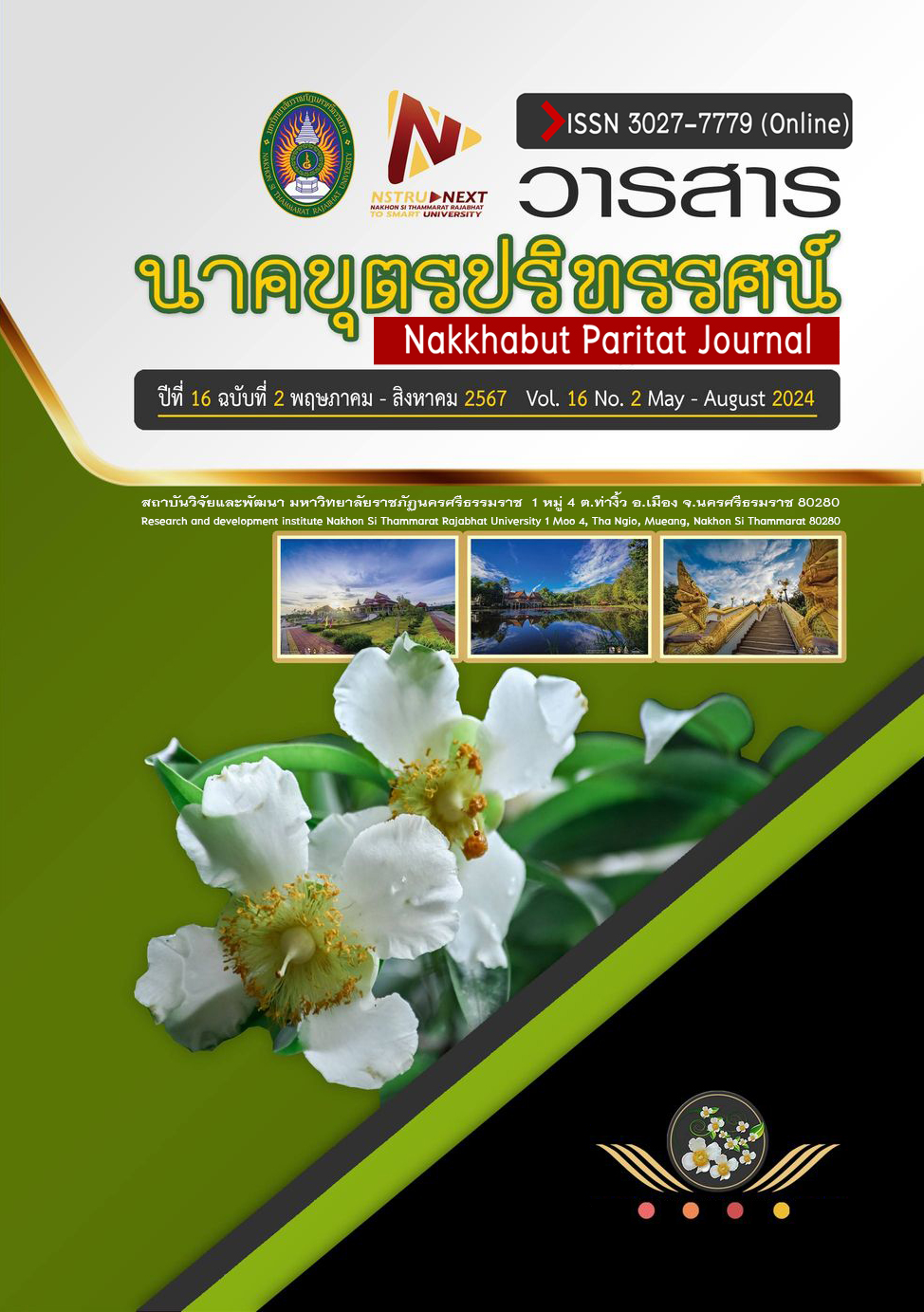Socio-demographic Determinants of the Quality of Life among Thailand's Aging Population
Main Article Content
Abstract
This study investigates the socio-demographic determinants of Quality of Life (QoL) among Thai adults aged 60 and over, utilizing data from the 11th Regional Health (RH) office spanning 2012-2018 with 34,800 participants. The WHOQOL-BREF evaluates QoL across physical, psychological, social, and environmental domains, analyzing how various factors impact QoL scores. Descriptive statistics and regression analyses uncover diverse aspects of QoL.
The findings of this study underscore the pervasive gender disparities prevalent across various dimensions. While males typically enjoy superior outcomes in physical, psychological, social, and environmental well-being, there is a striking lack of support and resources for females in these realms, particularly in low socioeconomic backgrounds among those aged 75-85. This disparity not only undermines the well-being of older females but also highlights systemic biases embedded within societal structures. Therefore, it is imperative to prioritize gender-sensitive policies and health promotion initiatives aimed at addressing the multifaceted needs of older women. By fostering inclusivity and equity, such interventions can effectively narrow the gender gap and promote holistic well-being for elderly individuals in Thailand, ensuring that both males and females receive the support and opportunities they deserve.
Article Details

This work is licensed under a Creative Commons Attribution-NonCommercial-NoDerivatives 4.0 International License.
References
Alvarez, P. (2023). Charted: The World’s Aging Population from 1950 to 2100. Retrieved 2023, October 9, from https://www.visualcapitalist.com/cp/charted-theworlds-aging-population-1950-to-2100/.
Attafuah, P. Y. A., Everink, I., Abuosi, A. A., Lohrmann, C., & Schols, J. M. (2022). Quality of life of older adults and associated factors in Ghanaian urban slums: a cross-sectional study. BMJ open, 12(2), e057264.
Department of Mental Health. (2018). The elderly have the second highest suicide rate. Retrieved 2024, May 9, from https://dmh.go.th/news-dmh/view.asp?id=27623. (in Thai)
Intraratsamee, J. (2017). Cooperative Learning between Elderly People and Care Giver to Develop Inside and Outside Environment of the Elderly People’s Home within Provinces under Responsibility, Regional Health Promotion Center 6 (Research report). Khon Kaen: Regional Health Promotion Center 7, Department of Health, Ministry of Public Health. (in Thai)
Khamsuchart, S. (2017). The health care problems and needs of the elderly in Thailand: Policy recommendations. Journal of Health Science, 26(6), 1156-1164. (in Thai)
Kim, B. R., & Hwang, H. H. (2022). Analysis of major factors affecting the quality of life of the elderly in Korea in preparation for a super-aged society. International Journal of Environmental Research and Public Health, 19(15), 9618.
Lamtrakul, P., Chayphong, S., Jomnonkwao, S., & Ratanavaraha, V. (2021). The association of falls risk in older adults and their living environment: A case study of rural area, Thailand. Sustainability, 13(24), 13756. (in Thai)
Leetrakun, P. (2019). An analysis of the poverty in elderly in Chiang Rai province. Srinakharinwirot Research and Development Journal of Humanities and Social Sciences, 11(22), 95-110. (in Thai)
Lepsy, E., Radwanska, E., Zurek, G., Zurek, A., Kaczorowska, A., Radajewska, A., & Kotcz, A. (2021). Association of physical fitness with quality of life in community-dwelling older adults aged 80 and over in Poland: a cross-sectional study. BMC Geriatrics, 21, 1-15.
Moirangthem, S., & Ojha, G. J. (2022). Gender differences in quality of life and subjective happiness in Indian elderly: A cross-sectional survey. The Indian Journal of Occupational Therapy, 54(2), 51-56.
Muhammad, T., & Maurya, P. (2022). Social support moderates the association of functional difficulty with major depression among community-dwelling older adults: evidence from LASI, 2017–18. BMC Psychiatry, 22(1), 317.
Scocco, P., & Nassuato, M. (2017). The role of social relationships among elderly community-dwelling and nursing-home residents: Findings from a quality of life study.Psychogeriatrics, 17(4), 231-237.
Shah, V. R., Christian, D. S., Prajapati, A. C., Patel, M. M., & Sonaliya, K. N. (2017). Quality of life among elderly population residing in urban field practice area of a tertiary care institute of Ahmedabad city, Gujarat. Journal of Family Medicine and Primary Care, 6(1), 101-105.
Singh, A., Palaniyandi, S., Palaniyandi, A., & Gupta, V. (2022). Health related quality of life among rural elderly using WHOQOL-BREF in the most backward district of India. Journal of Family Medicine and Primary Care, 11(3), 1162-1168.
Statista Research Department. (2023). Share of total population older than 60 years old in Thailand in 2022 with a forecast to 2040. Retrieved 2023, October 9, from https://www.statista.com/statistics/ 713667/thailandforecast-aging-population/.
Van Nguyen, T., Van Nguyen, H., Nguyen, T. D., & Nguyen, T. T. (2017). Difference in quality of life and associated factors among the elderly in rural Vietnam. Journal of Preventive Medicine and Hygiene, 58(1), E63.
West, E. C., Williams, L. J., Stuart, A. L., & Pasco, J. A. (2023). Quality of life in south-eastern Australia: normative values for the WHOQOL-BREF in a population-based sample of adults. BMJ Open, 13(12), e073556.
World Health Organization. (2023). WHOQOL: Measuring quality of life. Retrieved 2023, October 9, from https://www.who.int/tools/whoqol.


